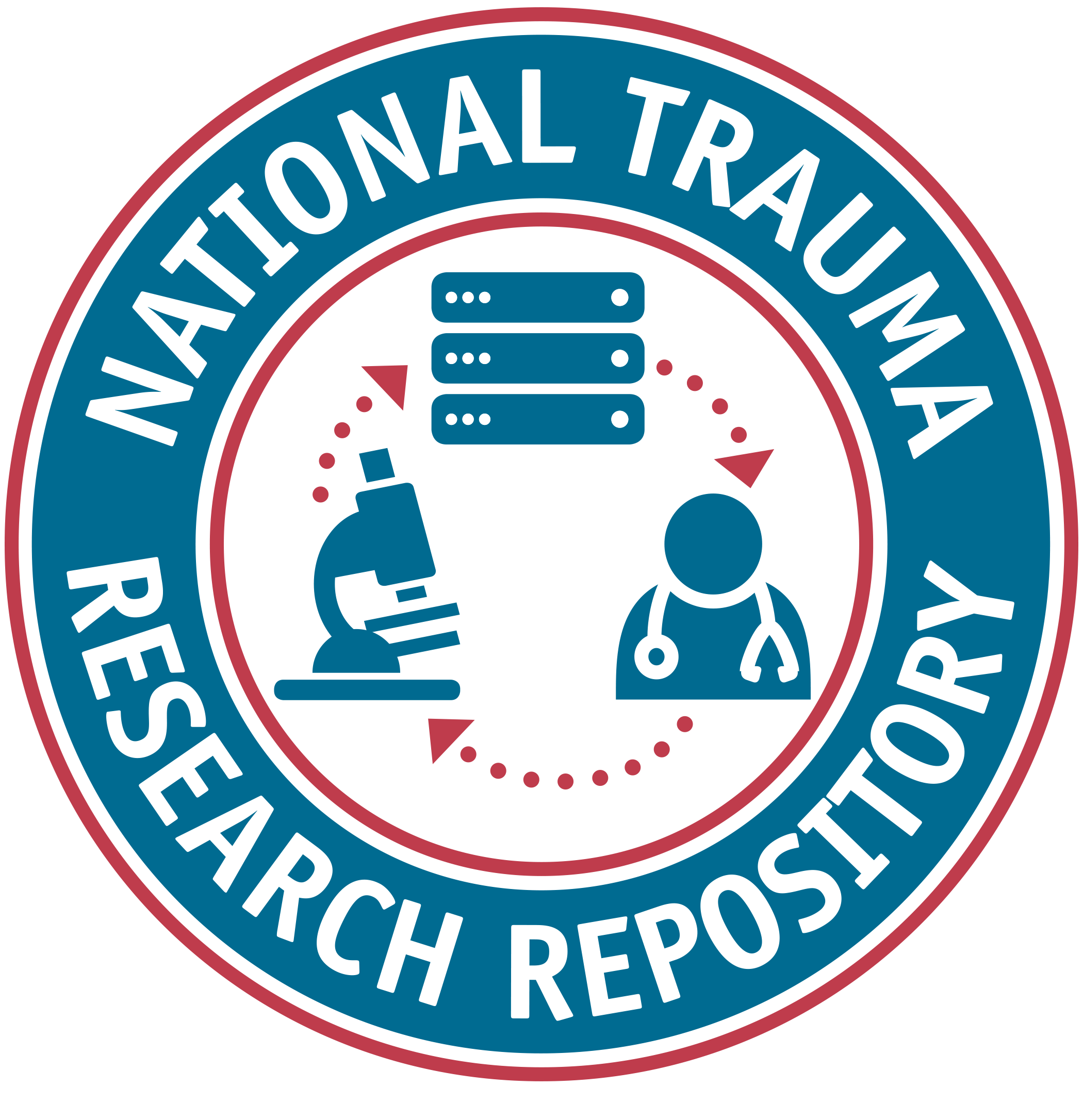Listed below are the details for the data element.
FITBIR
1.1
Element Type
Common Data Element
Aspiration indicator
AspiratnInd
Short Description
Indicator of foreign material breathed into the airway
Definition
Indicator of foreign material breathed into the airway
Notes
Creation Date
Historical Notes
Aspiration indicator
References
GENERAL: Chesnut RM, Marshall LF, Klauber MR, Blunt BA, Baldwin N, Eisenberg HM, Jane JA, Marmarou A, Foulkes MA. The role of secondary brain injury in determining outcome from severe head injury. J Trauma. 1993 Feb;34(2): 216-22.
McHugh GS, Engel DC, Butcher I, et al. Prognostic value of secondary insults in traumatic brain injury: results from the IMPACT study. J Neurotrauma. Feb 2007;24(2): 287-93.
Signorini DF, Andrews PJ, Jones PA, et al. Adding insult to injury: the prognostic value of early secondary insults for survival after traumatic brain injury. J Neurol Neurosurg Psychiatry. Jan 1999;66(1): 26-31
Adelson PD, Bratton SL, Carney, NA, Chesnut RM, du Coudray HE, Goldstein B, Kochanek PM, Miller HC, Partington MD, Selden NR, Warden CR, Wright DW. uidelines for the acute medical management of severe traumatic brain injury in infants, children, and adolescents.Chapter 6. Threshold for treatment of intracranial hypertension. (2003a). Pediatr Crit Care Med 4: S25-S27.
TBI: Chesnut RM, Marshall LF, Klauber MR, Blunt BA, Baldwin N, Eisenberg HM, Jane JA, Marmarou A, Foulkes MA. The role of secondary brain injury in determining outcome from severe head injury. J Trauma. 1993 Feb;34(2): 216-22.
McHugh GS, Engel DC, Butcher I, et al. Prognostic value of secondary insults in traumatic brain injury: results from the IMPACT study. J Neurotrauma. Feb 2007;24(2): 287-93. Signorini DF, Andrews PJ, Jones PA, et al. Adding insult to injury: the prognostic value of early secondary insults for survival after traumatic brain injury. J Neurol Neurosurg Psychiatry. Jan 1999;66(1): 26-31
Adelson PD, Bratton SL, Carney, NA, Chesnut RM, du Coudray HE, Goldstein B, Kochanek PM, Miller HC, Partington MD, Selden NR, Warden CR, Wright DW. uidelines for the acute medical management of severe traumatic brain injury in infants, children, and adolescents. Chapter 6. Threshold for treatment of intracranial hypertension. (2003a). Pediatr Crit Care Med 4: S25-S27.
Data Type
Alphanumeric
Input Restrictions
Single Pre-Defined Value Selected
Population
Adult and Pediatric
Guidelines/Instructions
GENERAL/TBI:
Choose one. Response is obtained from medical charts and/or patient data management system. This element is recommended for pediatric studies. Second insults may aggravate processes of secondary damage in a brain already rendered vulnerable by the primary injury. The main physiologic insults relevant to TBI are hypotension, hyper- or hypothermia, hypoxia, and hypocapnia due to hyperventilation. The adverse effect of the occurrence of such insults both pre- and in-hospital is well established. Second insults are commonly defined by threshold values but these values are not well established in pediatrics. Based on the available data for pediatric TBI , thresholds of 80-180 mg/dL for glucose are recommended. A threshold for hemoglobin is more difficult to define given emerging data on the lower limit of hemoglobin safely tolerated by critically ill children in general and the variable effect of blood transfusion in children with severe TBI specifically.
Preferred Question Text
Category Groups and Classifications
| Disease | Domain | Sub-Domain |
|---|---|---|
| General (For all diseases) | Disease/Injury Related Events | Second Insults |
| Traumatic Brain Injury | Disease/Injury Related Events | Second Insults |
Classification
Traumatic Brain Injury:
Supplemental
Epidemiology
Acute Hospitalized
Moderate/Severe TBI: Rehabilitation
Concussion/Mild TBI
General (For all diseases):
Supplemental
Keywords
TRACK_TBI
Labels





